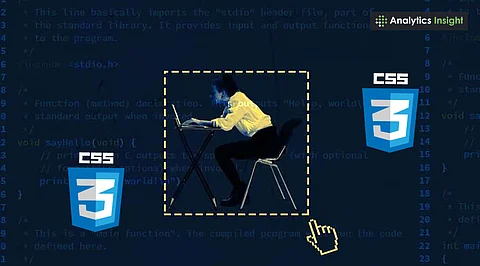

Start with basic concepts like selectors, properties, and box model before moving to layouts.
Use online tools and coding games to build skills through real practice and instant feedback.
Learn new CSS features like nesting and container queries to write cleaner, modern code.
Websites today focus a lot on how they look. The colors, buttons, text, and layout are all controlled by CSS. CSS stands for Cascading Style Sheets. It handles the design part of a website. Whether the site is accessed on a phone or a laptop, CSS ensures it looks good. Learning CSS helps in making websites and understanding how web design works. Here’s a simple guide that can help beginners understand CSS and start building basic websites.
HTML makes the content. CSS makes it look nice. With CSS, it is possible to change text color, size, position, background, layout, and more. For example, a heading in HTML simply displays the text, but with CSS, it can be made bold, blue, centered, or even animated.
Begin with the basics. These are the first few things to understand:
Selectors: These are used to pick the part of the page that needs styling, like headings or buttons.
Properties: These decide what to change, like color, font, or size.
Box Model: All areas of a website are addressed in a way that a box would be treated. This comprises the content, padding, border, and margin.
Experiment with tiny tweaks such as changing a button's color to green or adding space around text. These are the basics.
Also Read: Top CSS Libraries for Quick Prototyping
Most sites assist with hands-on experience. Sites such as CodePen or JSFiddle enable instant testing of code and viewing of results. There are even games such as CSS Diner and Flexbox Froggy that teach concepts through puzzles. They're entertaining and valuable.
Layouts determine the placement of elements on screen. There are two layout systems:
Flexbox: Well-suited for items in a row or column, such as navbars or photo cards
Grid: Well suited for whole pages or sections, such as image galleries
Either is simple to learn with a little practice. Begin by building a simple page layout with Flexbox. Then, attempt to build a simple photo grid with CSS Grid.
Phones, tablets, and laptops have different screen sizes. Websites should look good on all of them. This is where media queries help. Media queries allow changes in layout or size based on screen width.
For example, on a mobile screen, a three-column layout can turn into a single column. Try building a webpage that adjusts its layout when the screen is resized.
Also Read: Top CSS Animation Libraries for Stunning Websites
Some latest features in 2025 make coding easier and more powerful:
Nesting: Allows writing CSS inside CSS, which looks cleaner
Container Queries: Change styles based on the size of the container, not the whole screen
CSS Variables: Save values like colors or spacing and reuse them anywhere
These tools reduce code and make websites more flexible.
Practice by creating small websites. A personal profile page, a blog theme, or a product landing page are good ideas. These projects bring together various CSS skills and help realize how things work together.
Web developers exchange tips, tricks, and tutorials on YouTube, Reddit, and other sites. Some of the popular names are Kevin Powell and Josh Comeau. Their blogs and videos are clear and concise, describing things step by step.
Learning CSS in 2025 needs a clear and balanced approach. Begin with the basics, then gradually explore newer features. Practice by building real websites and using interactive tools. Stay connected with online communities and follow experts to stay updated. Strong skills come through regular practice, curiosity, and working on different types of projects. Following this path can lead to creating websites that are clean, responsive, and future-ready.
